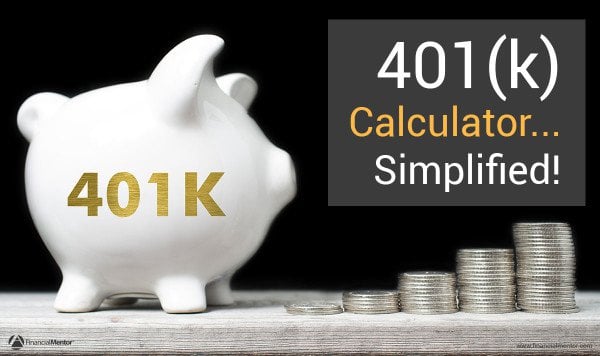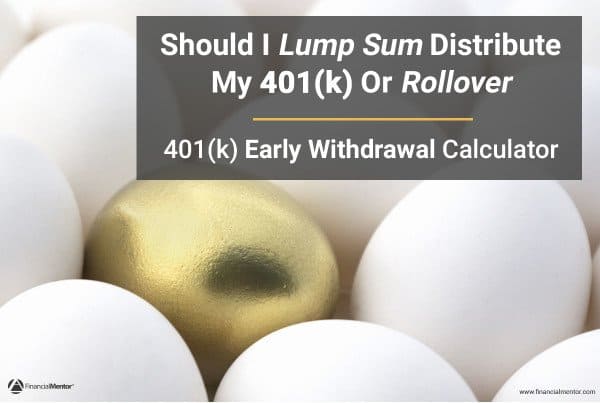Can You Apply This Principle To Your Advantage?
Key Ideas
- Learn how to use The Jigsaw Puzzle Principle to recognize unusual opportunities.
- Discover how I converted my IRA's into Roth IRA’s while paying little or no tax.
- Find out how you can apply this principle to build wealth in any area of your life.
Selling my hedge fund business was one of the dumbest financial decisions I’ve ever made.
I slaughtered a cash cow business for a few pounds of hamburger rather than enjoying the milk (cash flow) for years into the future.
But every cloud has a silver lining…
Roth IRA conversions began in the same year, and that created a situation where I could convert that lemon of a decision into lemonade.
Let me explain how the process worked so you can apply the same principle in your own life.
A Brief Primer On Roth IRA’s
Let’s begin with a quick primer on Roth IRA’s so that we are all starting on the same page:
- The Roth IRA is a special retirement savings plan under U.S. tax law.
- There is no up-front tax deduction for contributions to a Roth IRA.
- However, all the income and capital within a Roth IRA are tax free for the rest of your life (or until the government changes the rules).
- When you convert money from a regular IRA or SEP IRA to fund a Roth IRA, you must pay income tax at ordinary rates on the amount converted in the year it is converted.
- Roth IRA conversions and contributions are subject to income and maximum annual contribution limits.
In a nutshell, the big distinction separating a Roth IRA from other retirement savings vehicles is you don’t get any tax deduction up-front, but get tax-free withdrawals during retirement instead.
Keep this key distinction in mind as I explain how you can apply this characteristic to grow your wealth using the following wealth building principle.
Get This Article Sent to Your Inbox as a PDF…
The “Jigsaw Puzzle” Principle – Revealed!
Opportunity strikes every day – frequently in unexpected ways.
There are many ways to recognize unusual opportunity when it comes knocking, but one of my favorites is the jigsaw puzzle principle. Here's how it works.
All the activity that surrounds your life forms a massive jigsaw puzzle where certain pieces fit together perfectly, and others don’t match at all.
Your objective is to identify the unique attributes that specifically characterize any investment or business situation (similar to looking at the image on a puzzle piece), and then find the matching puzzle piece in your life that corresponds to those attributes.
When you successfully match the pieces together, you’ve identified a valuable opportunity.
Most people fail to advance in life because they either don’t recognize opportunity when it's in front of them, or fail to act on it. It is never for a lack of opportunity.
In other words, each characteristic of an investment or business situation implies an opportunistic way to exploit that characteristic to your advantage – but only when your life situation matches.
For example, I’ve coached clients where one spouse is a realtor. Because real estate is an inefficient market (attribute), there is a competitive advantage to being in the middle of deal-flow every day.
A realtor will often see incorrectly priced deals way ahead of the public because of their network and daily communication. This advantage only goes to people in the middle of deal-flow, and only exists because of the unique characteristics of real estate pricing and sales.
Some of my financial coaching clients have successfully built wealth just from fitting that one jigsaw puzzle piece into their overall wealth plan. Notice that this strategy uniquely fits realtor’s lives – not mine, and probably not yours.
Similarly, my financial coaching business only exists today because I correctly identified the unique attributes of the internet:
- It's a cost efficient, high-leverage, worldwide marketing platform.
- It's perfect for promoting a narrowly niched service business.
If I had to rely on local customers and/or traditional advertising to promote my business, it would fail. My life goals and the unique attributes of the internet fit perfectly together.
Returning to Roth IRA conversions, the unique attribute for this puzzle piece is that all converted monies are taxable up-front in exchange for tax-free withdrawals for the rest of your life. Some life situations are hurt by this characteristic (elderly, high tax bracket filers, etc.), but other life situations spell opportunity.
Can you figure out what life situation will particularly benefit from a Roth IRA conversion?
Hint: look at how I changed my financial picture by selling my business.
How A Roth IRA Conversion Turned A Lemon Into Lemonade…
When I sold the hedge fund business in 1998 my financial situation changed on a dime.
I went from being a high income earner in the top tax bracket saddled with deduction limitations, to no earned income. I also had substantial assets accumulated over many years in both regular IRA’s and SEP IRA’s.
My financial situation was relatively rare, but the unique characteristics spelled opportunity. I could aggressively convert my IRA’s and SEP IRA’s into Roth IRA’s while paying little or no tax. It was a no-brainer! The puzzle pieces fit together perfectly.
In other words, the decision to convert is normally quite complicated because it involves a variety of tax issues. (Use this free Roth IRA calculator to help walk you through the decision.)
However, when your income falls through the floor and you have tax deferred IRA assets, then the decision is a no-brainer.
My situation is not an isolated circumstance. It happens as a result of job loss, selling a business, temporary layoff, downsizing, and more. It can easily happen to you some day, so make sure you file away this strategy for future reference. It could be worth a fortune to you!
And don’t just get hung up on the Roth IRA part of this story either – that is merely one illustrative example.
Instead, the real golden nugget here is the principle being taught.
You can bang your head against the wall trying to force success, or you can fit the jigsaw puzzle pieces of life to together so that you effortlessly flow toward your goals with a minimum of difficulty.
In Summary…
In summary, there are two essential ideas to learn from this example…
- If you have little or no taxable income, you can get the benefits of a Roth IRA (tax free growth and income for life) by converting existing SEP’s and regular IRA’s without suffering any of the negative tax consequences. It is a no-brainer strategy when the situation is right. Just convert enough savings to use up your deductions so you come out with minimal taxable income.
- Don’t limit this thinking process to Roth IRA’s. Instead, develop the habit of looking for any opportunity implied by the unique characteristics of every investment and life situation. Use this thinking process to regularly find competitive advantages that help you build wealth. I’ve used the jigsaw puzzle principle in widely disparate fields including commodities trading, commercial real estate, and business as well. It's universally applicable.
Fitting the disparate puzzle pieces of your life into a single harmonious picture is the golden goose in this discussion: Roth IRA’s are just an illustrative example to drive home this essential wealth building principle.
Please let me know what you think about the jigsaw strategy and maybe share a quick note about how you've applied it in your life using the comments below.
This post is part of the Roth IRA Movement organized by Jeff Rose to bring more attention to Roth IRA’s as a unique retirement savings vehicle.
Invest Like Todd!
A better investment strategy than buy and hold - Makes more by risking less
Discover the scientific investment process Todd developed during his hedge fund days that he still uses to manage his own money today. It’s all simplified for you in this turn-key system that takes just 30 minutes per month.




















Nice one Todd, simple – but i do not believe I have read that before. I will file it away for the eventual lay-off!
@dia385mond Well, hopefully the buyout occurs before the layoff… but yes, that is why I shared it. I’ve never seen anyone else write about this subject yet it is an incredibly effective strategy.
This is a great post. Thanks for sharing! The jigsaw puzzle analogy and the opening up oneself to see the opportunity of each particular investment tool is a definite goal and direction I can set for my grey matter. It’s astonishing how I never gave much thought to tax considerations (simple lack of education) for the first some odd decades of my life.
@Todd23 Thanks Todd! Yes, taxes are usually your single biggest expense when you add them all up – even bigger than housing.
BTW, great name you got there 🙂
@Financialmentor Ditto. Oddly enough, I don’t find many of us out and about in the world.
It sounds like I may be in a similar situation, Todd: sold my business in 2010. While I had no W-2 income in 2011, I did have income from investments (capital gains, dividends, etc). Does that mean that the zero-tax Roth conversion won’t work for my situation? Or is there something I don’t understand? Could you give, or point me to a simple example to answer the question: how much in investment gains can I have while still doing a zero-tax Roth conversion?
@chaddox I’m reticent to put specific rules on this post because the government changes them regularly. Also, personal circumstances vary widely with little details changing things considerably. I would encourage you to see an accountant who can work up the numbers (assuming you bring all your info) in considerably less than hour. Also, you can look online at IRS.gov for the latest rules.
Hope that helps…
Interesting idea. But you need to do it when you’re younger. Once in or near retirement I am not sure if it makes sense.